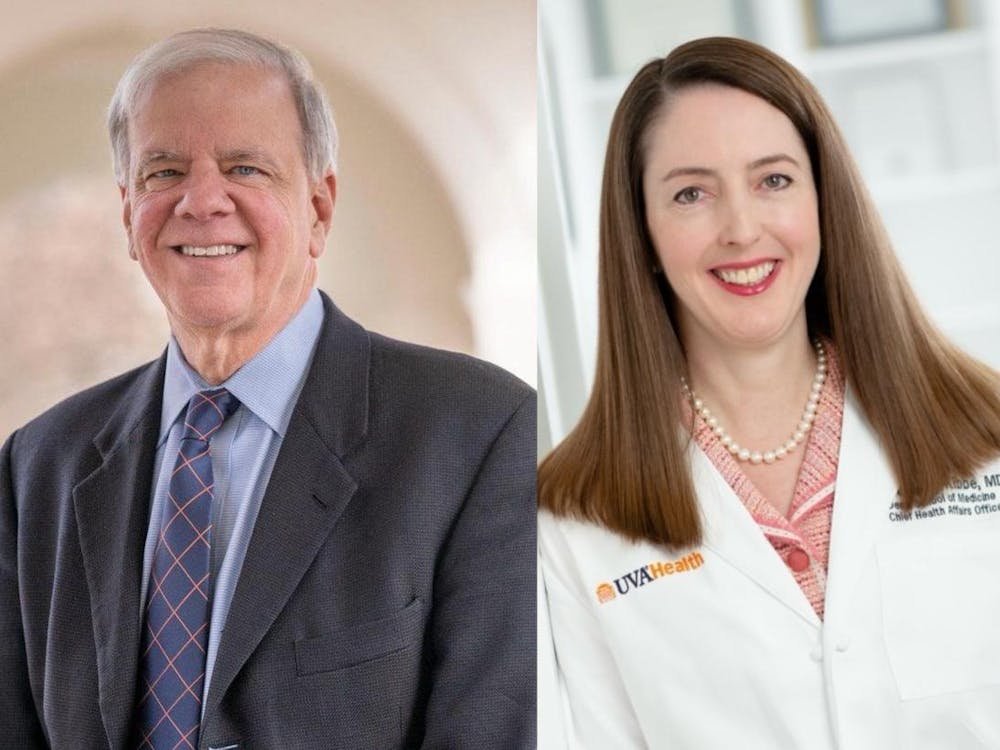Love is a social phenomenon involving intense feelings of attraction and attachment towards another individual. Love, from a biological perspective, is a mechanism meant to pass down one’s favorable genes, but relationships have since evolved into complex, time and energy consuming commitments.
“It turns out that we’re not capable of taking care of [children] by ourselves,” Assoc. Psychology Prof. James Coan said. “We have to have other people in our lives. The principal human adaptation is to bond with other people with whom we are extremely cooperative.”
Coan said the development of human babies proves costly, as they develop slowly and need a relatively large food source to keep their brains and bodies functioning. Therefore, pressure developed to find not just any partner, but a trustworthy partner to work collaboratively with.
“If you’re moving a table from downstairs to upstairs and you’re doing it all by yourself, you’re going to bump into the walls and scratch the walls and hurt your back,” Coan said. “You could do it, but it’s going to be less fun and more disruptive than if you did it with someone else.”
In fact, Coan said love is falling deeply into trust with another individual. Oxytocin, a neurotransmitter and hormone that is secreted by the pituitary gland, is involved with formation of trust and social bonding.
“Oxytocin seems to move people together,” University Social Psychology doctoral student Katie Lancaster said. “It can increase people making eye contact [and] people who have higher levels of oxytocin naturally — they seem to be more socially in tune.”
By increasing pro-social behavior, oxytocin seems to promote the formation of close relationships. Lancaster says oxytocin is released during intimate behaviors such as hugging, causing individuals to refer to it as the cuddling hormone. Endogenous opioids — drugs naturally produced in the body to relieve pain — are also released during close physical contact.
The combination of social pressure to find a trustworthy mate and the stimulating effects on the brain during close contact all lead to the generation of affection towards another person. When two people first fall in love, they often experience an obsessive desire to be with each other. Limerence, a state of being often referred to as the “honeymoon” stage, is associated with an elevated, positive mood.
“That state of limerence is going to inhibit your disgust responses,” Coan said. “You rewrite your own sensory experiences so that they look even better if you really love someone.”
Oxytocin released during physical contact also affects the brain’s response in favorable ways. The amygdala —a brain structure that deals with emotional processing — produces an aversion response in an emotionally stimulating situation, such as a car crash. Lancaster notes that oxytocin works to reduce levels of anxiety by lessening activity in the amygdala during these types of arousing experiences.
However, this stage of limerence does eventually fade, which is why couples that have been dating more than a few months may not experience the same type or intensity of emotions they felt at onset of their relationships.
According to Coan, couples soon find themselves faced with questions that depend more on compatibility, such as where to live, where to eat and what activities to do together, leading to the end of less harmonious relationships. In addition, people may fall out of love when they find someone who is comparable to their loved one but seems to have a quality that is more favorable.
Coan said those who participate in marital affairs often express deep regret about their decisions to be unfaithful. When the temporary, initial attraction dissipates, they often find that they are not well suited to start a life together. Therefore, high compatibility combined with physical touch between two individuals seem to lead to successful relationships.
“Think of life as one great big table-moving exercise, and the metaphor holds up pretty well.” Coan said. “If we are going through life alone, we are going to hurt ourselves and a lot of other things — we’re not going to be as good at it.”





